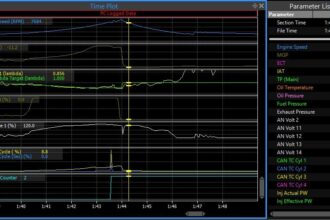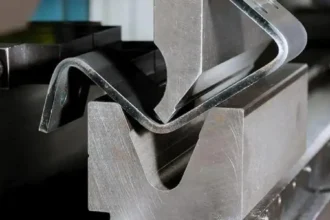Introduction to the Houston Tunnels
Houston is a city known for its vibrant culture, rich history, and diverse landscapes. But beneath the bustling streets lies an intriguing labyrinth of passageways that many residents and visitors may not even know exist: the Houston tunnels. These underground corridors connect buildings across downtown, providing a unique glimpse into the city’s architectural ingenuity. Imagine strolling through climate-controlled walkways while avoiding the sweltering Texas heat above. The Houston tunnels are not just practical; they hold stories waiting to be uncovered.
As we delve deeper into this fascinating network, you’ll discover who built these tunnels, when they were constructed, their historical significance, and much more. Whether you’re planning a visit or simply curious about what lies beneath your feet in this sprawling metropolis, let’s explore the hidden world of the Houston tunnels together!
Who Built the Houston Tunnels?
The Houston Tunnels were constructed by a collaboration of engineers, architects, and city planners. Their vision was to create an innovative underground network that would enhance urban mobility.
In the 1980s, local developers recognized the need for a climate-controlled environment. This led to the design of pedestrian pathways connecting key buildings in downtown Houston.
Many private companies played vital roles in construction. They worked tirelessly to ensure safety and efficiency throughout the project’s phases.
The tunnels also reflect Houston’s resilient spirit. Built during a time when the city’s population was rapidly growing, they aimed to facilitate easier access amid harsh weather conditions common in Texas.
Today, these tunnels stand as a testament not only to engineering prowess but also to forward-thinking urban planning strategies employed decades ago.
When Were the Houston Tunnels Constructed?
The Houston Tunnels began their construction in the late 1970s. This ambitious project aimed to create a network that would link various buildings downtown.
As urbanization expanded, city planners recognized the need for efficient pathways beneath the bustling streets. The first section opened its doors in 1980, providing a groundbreaking solution to pedestrian movement.
Over the years, additional sections were added, transforming this underground labyrinth into what it is today—a sprawling system of walkways and links connecting more than six miles of commercial spaces.
The tunnels quickly became vital for workers seeking refuge from Houston’s sweltering heat while navigating between offices and eateries with ease. Each new segment enhanced accessibility and convenience for both locals and visitors alike.
This innovative infrastructure reflects Houston’s adaptability as it continues evolving alongside modern demands.
History of the Tunnels and Why They Were Built
The Houston Tunnels have a fascinating history rooted in the city’s rapid growth. In the 1960s, as downtown Houston expanded, there was a pressing need for efficient pedestrian movement.
Originally designed to connect various office buildings, these tunnels provided an alternative to navigating busy streets filled with traffic. They allowed workers and visitors to move freely without facing harsh weather conditions.
The initial construction focused on convenience and safety. As businesses flourished above ground, the underground network became essential for lunch breaks and commuting between meetings.
Over time, this subterranean system evolved into a vibrant community space. Shops and eateries began popping up within the tunnels, making them more than just passageways but social hubs as well. The vision behind their creation changed from merely connecting buildings to enhancing urban life in Houston.
The Location and Layout of the Houston Tunnels
The Houston Tunnels are an impressive underground network, seamlessly connecting the downtown area. Spanning approximately six miles, these passageways link over 90 city blocks.
You’ll find entrances in various locations, including office buildings and shopping centers. The tunnels primarily run beneath major streets like Main Street and Texas Avenue.
Each tunnel is well-marked with signs guiding you to different destinations such as restaurants, shops, and transit options. This ensures easy navigation for both locals and visitors alike.
The layout comprises wide corridors that allow for smooth foot traffic. It’s designed thoughtfully to accommodate daily commuters while also catering to those exploring the vibrant offerings of downtown Houston.
Whether you’re on a lunch break or seeking refuge from the heat, the tunnels provide a unique experience tucked away from street level hustle and bustle.
What Are the Benefits of Using the Tunnels?
The Houston tunnels offer a unique way to navigate the city. They provide shelter from the sweltering Texas heat, allowing pedestrians to comfortably traverse downtown without battling the weather.
Safety is another key advantage. The tunnels keep foot traffic away from busy streets, reducing the risk of accidents and enhancing security in an area bustling with activity.
Accessibility cannot be overlooked either. These underground passageways connect various buildings, facilitating easy access for workers and visitors alike.
Moreover, they foster a vibrant atmosphere by housing shops and eateries. This encourages social interaction among residents and tourists while promoting local businesses.
In addition to convenience, using the tunnels can significantly cut down commute times. Instead of navigating congested roads above ground, traversing through these pathways offers a quick alternative that many locals appreciate.
Tips for Navigating the Tunnels
Navigating the Houston Tunnels can be an adventure in itself. First, grab a map at any entrance. It will help you understand the layout and find your way around.
Next, pay attention to signage. The tunnels are well-marked, guiding you to major destinations like office buildings and restaurants.
Be mindful of peak hours. During lunchtime, the tunnels can get crowded with professionals on their lunch breaks. If possible, plan your visits outside these busy times for a smoother experience.
Comfortable shoes are essential since you’ll likely walk several blocks underground.
Don’t hesitate to ask locals for directions or recommendations. Many Houstonians are familiar with the tunnel system and happy to share helpful tips or their favorite spots along the way!
Additional Fun Facts About the Houston Tunnels
The Houston Tunnels boast an interesting blend of utility and local lore. Spanning nearly six miles, these underground pathways connect over 90 city blocks.
Did you know they were originally designed to help residents escape the sweltering Texas heat? The tunnels maintain a cooler climate, providing a comfortable passage year-round.
Another fun aspect is their vibrant art scene. Many sections feature murals created by local artists, adding color and creativity to the otherwise utilitarian space.
Additionally, the tunnels are not just for pedestrians. They house shops, restaurants, and even office buildings! This makes them a bustling hub during lunch hours.
Rumor has it that ghostly figures have been spotted wandering through these passages at night. Whether true or merely urban legend, it adds an air of mystery to this unique network beneath the city streets.
FAQs
Curious about the Houston tunnels? You’re not alone. Many people have questions about this intriguing underground world.
One common inquiry is how long the tunnels are. They stretch over six miles, providing a unique pathway through downtown Houston.
Another popular question revolves around safety. The tunnels are generally safe during operating hours and well-maintained to ensure a pleasant experience for visitors.
People often wonder if there’s an entry fee to access them. Good news! Most areas of the Houston tunnels are free to explore, making it an affordable adventure.
Many also ask about accessibility options available in the tunnel system. Thankfully, most entrances and pathways accommodate those with mobility challenges, ensuring everyone can enjoy their time below ground.
If you’re wondering what businesses operate within these corridors, various shops and restaurants line the walkways, offering delicious meals and unique items that reflect local culture.
Conclusion
The Houston Tunnels are a fascinating aspect of the city’s infrastructure, serving as both a practical solution for urban navigation and an intriguing historical feature. These subterranean passages not only provide relief from Houston’s sweltering heat but also connect various buildings and establishments across downtown.
With their unique layout and design, navigating the tunnels can be an adventure in itself. The benefits they offer extend beyond convenience; they have transformed how locals and visitors experience the city.
As you explore this hidden world beneath Houston, keep in mind that there’s always more to discover—whether it’s through engaging with history or simply enjoying the cooler air below ground. The next time you’re wandering around downtown, don’t forget to venture into these tunnels; who knows what surprises lie just beneath your feet?

















